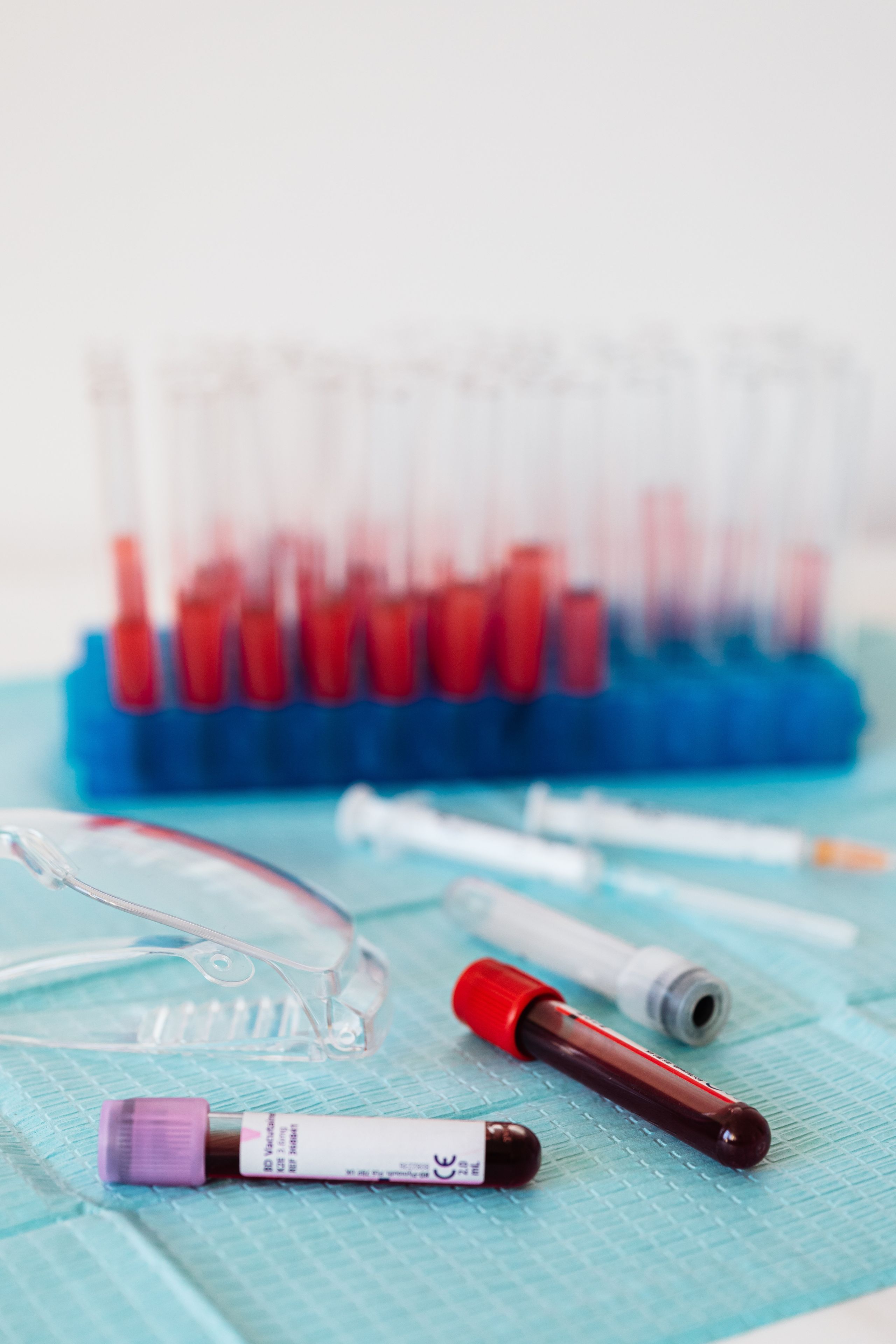Do you know your sickle cell status?
A First Date Question

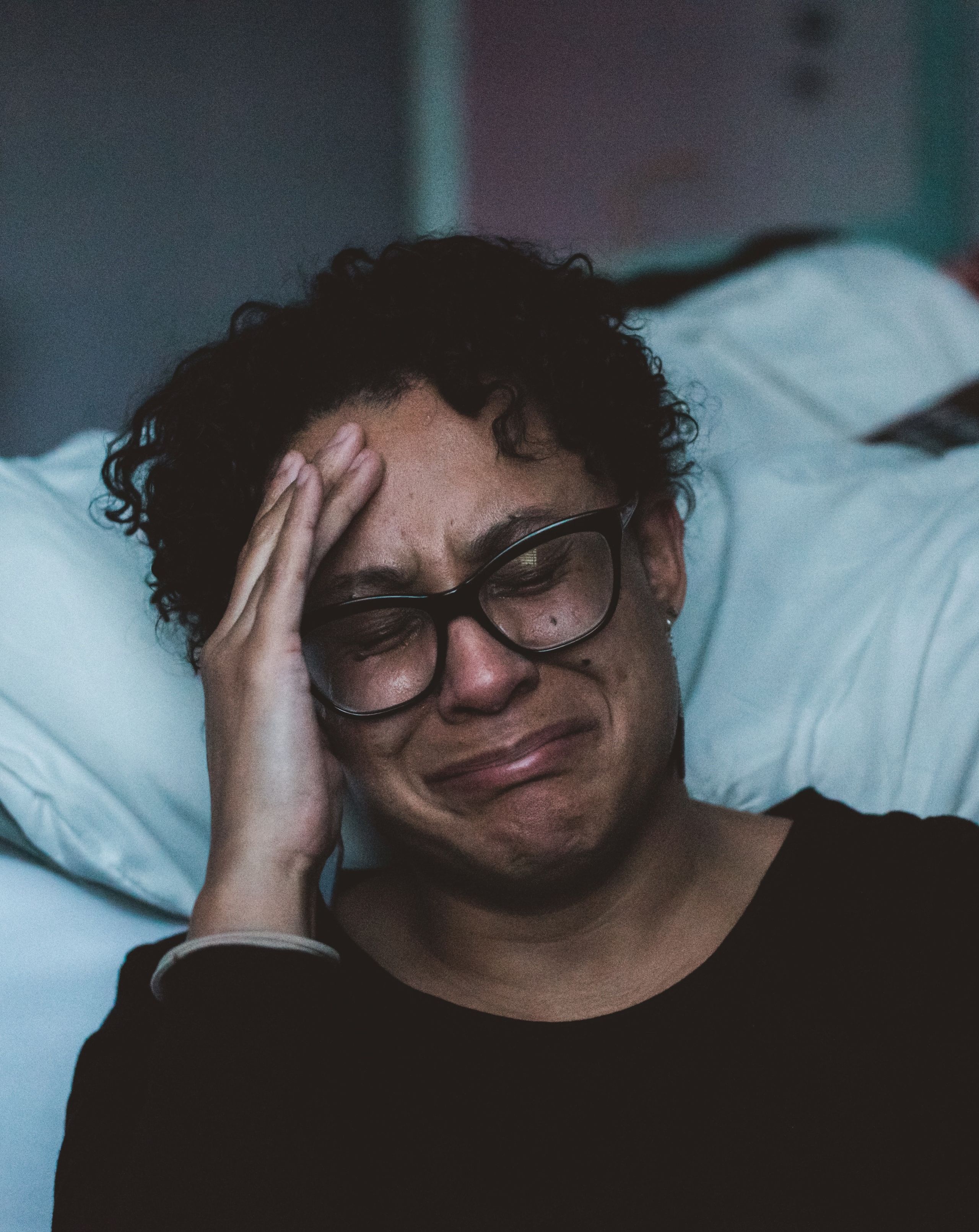
It is typical to ask on a first date, "Are you a cat person or a dog person?", but asking the right question can save you more than just a bad date, it can save you a lifetime of pain.
Sickle cell disease affects not only the patient, but the people around them too.
Sickle Cell Disease
Sickle cell disease(SCD) is an inherited blood disorder that stems from hemoglobin genotypes interrupts with the transport of oxygen to the tissues.[9]
Hemoglobin genotypes are the genetic constitution of an individual's red blood cell with reference to traits. [9]
There are primarily four types of hemoglobin genotypes: AA, AS, AC and SC [9]
The AC and SC cells are termed as sickle cells because of their shape. They are characterized by an imperfect hemoglobin, present in red blood cells, that carries oxygen to the tissues of the body. [9]
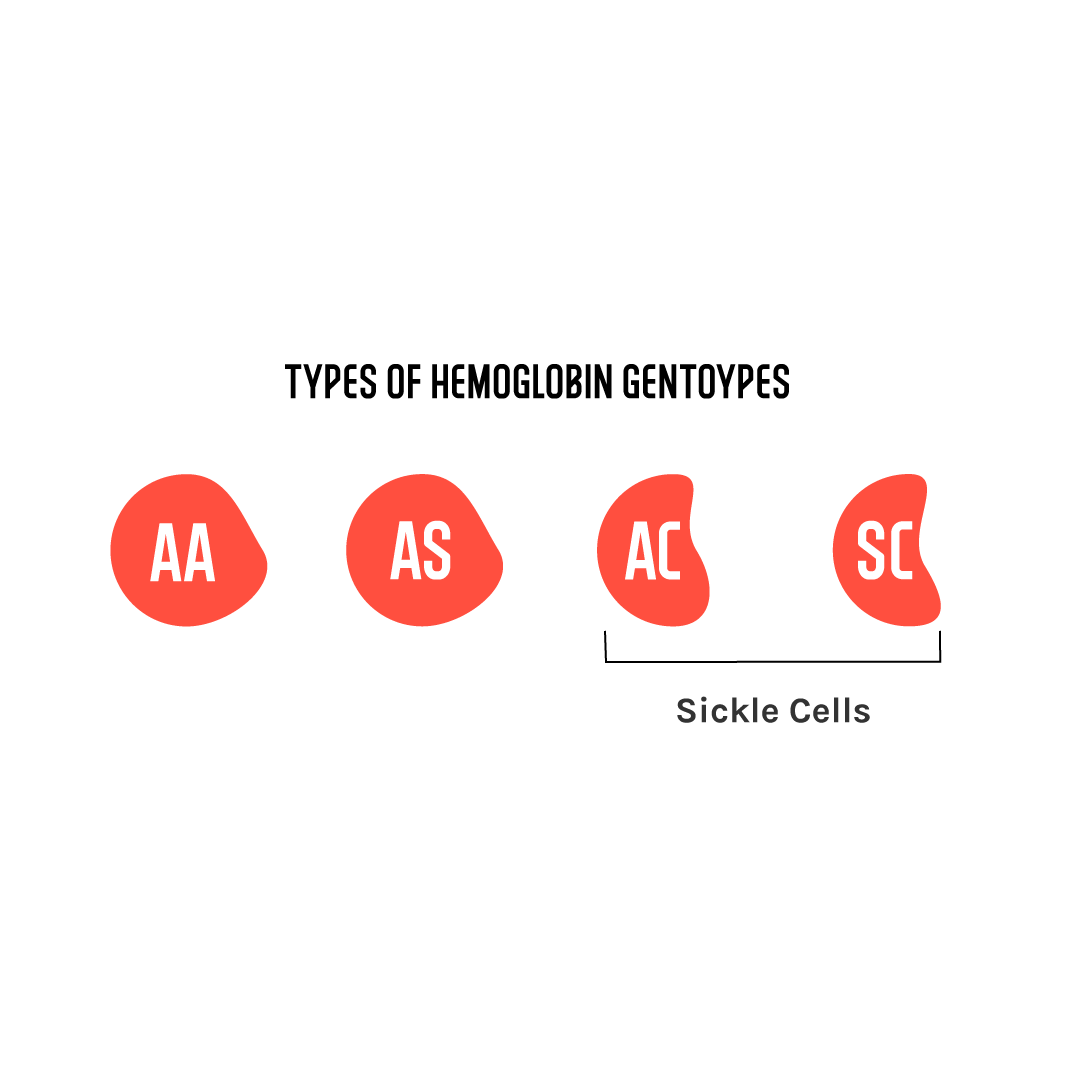
_____________________________________________________________________________
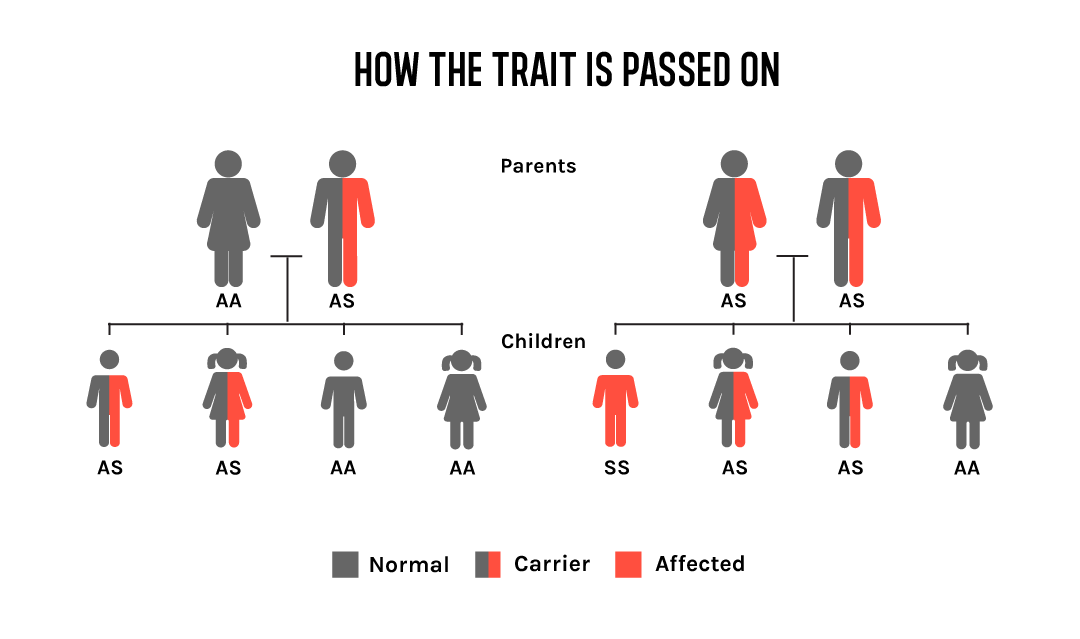
How does one get Sickle Cell?
Sickle cell is genetic and is passed from parents to their children.
- A person will be born with sickle cell disease only if two genes are inherited—one from each parent. [9]
- A person who inherits just one gene is healthy and said to be a “carrier” of the disease. A carrier has an increased chance of having a child with sickle cell disease if they have a child with another carrier. [9]
Individuals with sickle cell disease experience severe pains in body parts where oxygen flow is compromised. [9]
The challenge with living with sickle cell is that the average diagnosed patient has a shorter life span than the average human being.
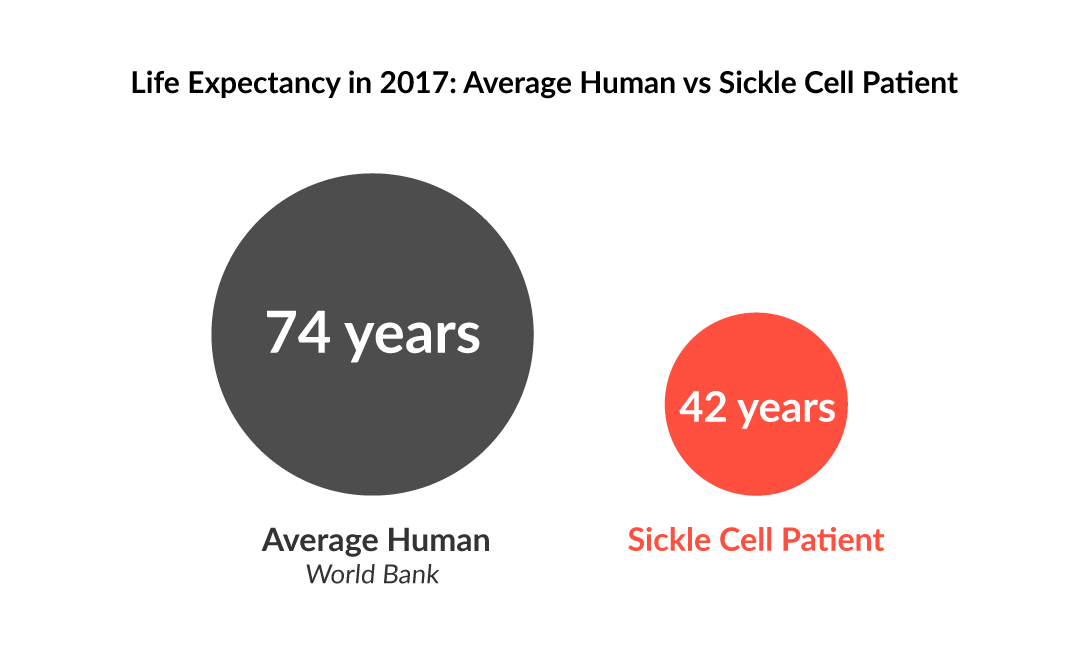
Sickle cell is not curable and is characterized by a variety of adverse effects and symptoms which have negative impacts on the patient's wellbeing and mental health.
Sickle cell physically and mentally affects the patient and the people around them. When ill, sickle cell patients need a huge amount support to take care of themselves. This affects their lifestyle as a lot more care needs to be taken since they are prone to a number of diseases.
Common symptoms of the diseases are: anemia, episodes of pain, poor vision, frequent infections, swelling of hands and feet, vision problems, and delayed growth.[3]
Sadly, these symptoms often lead to circumstances that lead to the demise of sickle cell patients.
The effects of sickle cell can be extremely nerve-wracking!
- Asthma
- Bone or Osteopathic disorders
- Bronchitis
- Cardiovascular events
- Chronic leg or skin ulcers
- Hearing loss
- Jaundice
- Loss of sight
- Migraines
- Organ damage
- Pregnancy complications
- Emotional trauma
- Anxiety
[3]
Even though sickle cell is said to have originated from Africa, migration patterns have seen the disease spread to other regions of the world.
Sickle cell is believed to have originated from Africa as a malaria-resistant human mutation.[4] Malaria, a disease known to tropical regions, is one of the main contributors to child deaths in said regions. However, though beneficial, when two malaria resistant beings procreate, they stand the chance to give birth to a sickle cell child.
Approximately, 100,000 Americans are living with sickle cell today. [9]
Looking at sickle cell data collected from Michigan over a period of 17 years, we can see the distribution of each race living within the state. [10]Though the black race is predominantly affected by the disease, it can be seen that other races are capable of acquiring the disease. This hints at the fact that if left unchecked, it is possible for the disease to spread further.
Sickle Cell Carriers
Sickle Cell Patients
Technology has seen to an improvement in treating patients living with sickle cell, thereby reducing the mortality rate, however this comes at a high medical cost.
Studying the death trend of sickle cell patients in the United States from 1979 to 2017, it can be seen that the trend has somewhat reduced over the years [8] . It is difficult to interpret the spike in the 1990s, however one theory suggests that more cases were probably being reported during that period. On the right to the death trend graph, the average annual medical cost is shown. This is to juxtapose the two and show how, even though the death trend may be reducing, the medical costs are rather high. In 2019, The median income per household in 2013 was approximately $52,000, which suggested that sickle cell-stricken families would be spending half of that on medical bills.
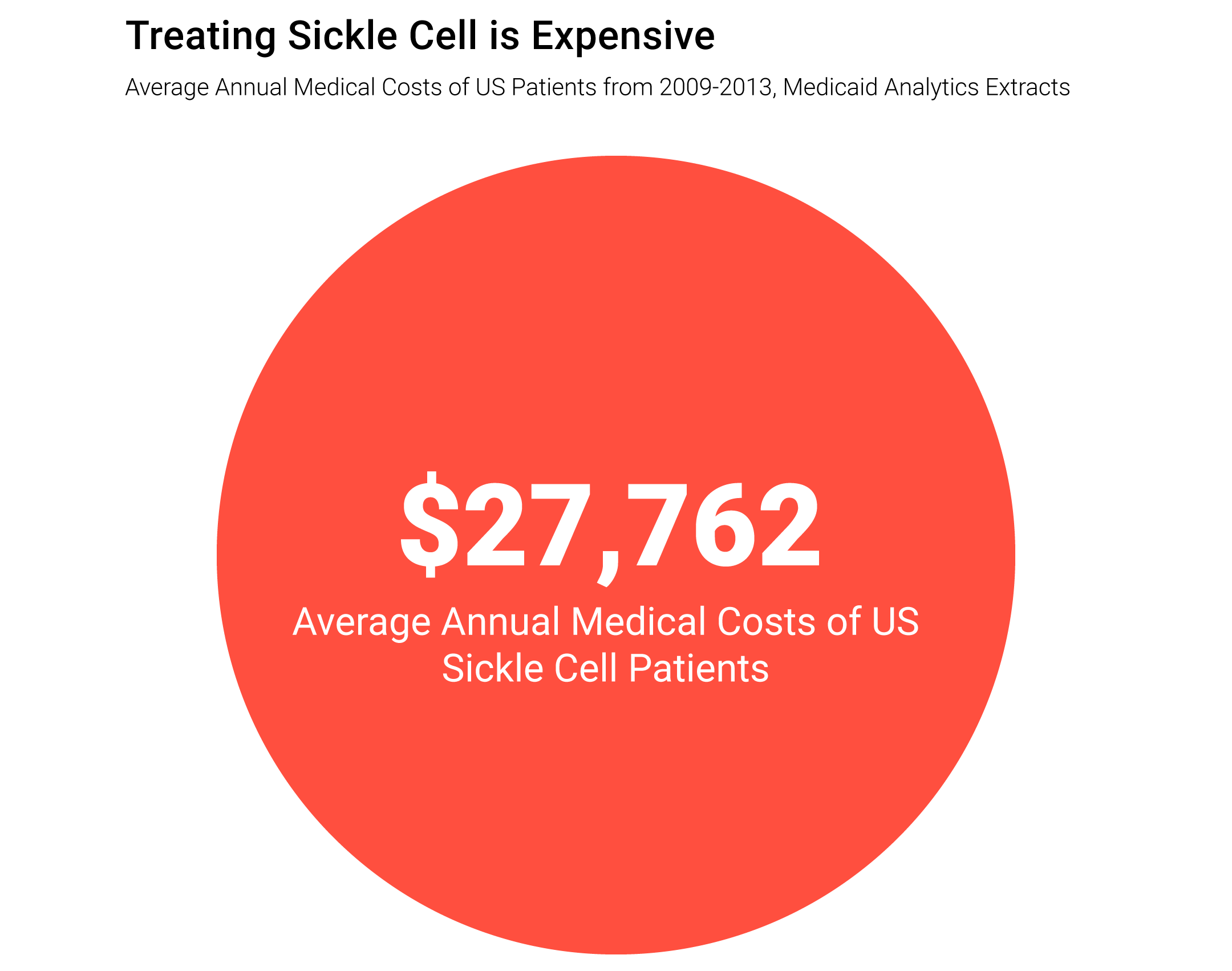
_____________________________________________________________________________
But where do all these medical costs go?
The graph on the left outlines where most of the annual medical cost above goes to. For most parts, it can be seen that most of the annual medical costs when into inpatient costs. Inpatient costs are cost incurred in a hospital stay. This hints at the fact that sickle cell patients spend a lot of time admitted in hospitals. The second highest cost, pharmacy costs, imply that there is a ton of medication involved when trying to manage the disease. [6]
Outpatient costs are the costs that do not really require any form of hospitalization. It is evident that these costs contribute the less to the overall annual medical bill of a patient.
What can you do to help reduce the spread of sickle cell?
Despite its effects, sickle cell can easily be avoided. It starts with knowing your sickle cell status.
Being aware of your status, and the effects of the disease give you the necessary awareness on who to enter a child-bearing
relationship with.
You can easily check your status by going to your nearest hospital and asking to do a sickle cell screening test. You can
check www.sicklecelldisease.org to find testing locations in your community.[11]
A typical test ranges from $3.07 - $5.09 and typically take a day to get results. This can save you thousands of dollars in the
future.[12]
You can also spread awareness on this topic by having more conversations about it.
So anytime you go on a first date seeking a long-term union be sure to ask your date if they know their sickle cell status,
because this can go a long way in reducing the prevalence of the disease.
We cannot cure sickle cell, but we can prevent it.
References
[1]2021. [Online]. Available: https://www.pexels.com/photo/man-and-woman-sitting-on-chair-in-front-of-table-4255483/. [Accessed: 16- Mar- 2021].
[2]"State of Working America Wages 2019: A story of slow, uneven, and unequal wage growth over the last 40 years", Economic Policy Institute, 2021. [Online]. Available: https://www.epi.org/publication/swa-wages-2019/. [Accessed: 16- Mar- 2021].
[3]"Sickle cell anemia - Symptoms and causes", Mayo Clinic, 2021. [Online]. Available: https://www.mayoclinic.org/diseases-conditions/sickle-cell-anemia/symptoms-causes/syc-20355876#:~:text=Sickle%20cell%20anemia%20is%20an,like%20sickles%20or%20crescent%20moons. [Accessed: 16- Mar- 2021].
[4]"NotAloneInSickleCell.com", NotAloneInSickleCell, 2021. [Online]. Available: https://www.notaloneinsicklecell.com/Global-Impact-Of-SCD/. [Accessed: 16- Mar- 2021].
[5]M. Roser, E. Ortiz-Ospina and H. Ritchie, "Life Expectancy", Our World in Data, 2021. [Online]. Available: https://ourworldindata.org/life-expectancy. [Accessed: 16- Mar- 2021].
[6]N. Shah et al., "Treatment patterns and economic burden of sickle-cell disease patients prescribed hydroxyurea: a retrospective claims-based study", Health and Quality of Life Outcomes, vol. 17, no. 1, 2019. Available: 10.1186/s12955-019-1225-7.
[7]"Sickle Cell Disease | NHLBI, NIH", Nhlbi.nih.gov, 2021. [Online]. Available: https://www.nhlbi.nih.gov/health-topics/sickle-cell-disease. [Accessed: 16- Mar- 2021].
[8]A. Payne et al., "Trends in Sickle Cell Disease–Related Mortality in the United States, 1979 to 2017", Annals of Emergency Medicine, vol. 76, no. 3, pp. S28-S36, 2020. Available: 10.1016/j.annemergmed.2020.08.009.
[9]"What is Sickle Cell Disease? | CDC", Centers for Disease Control and Prevention, 2021. [Online]. Available: https://www.cdc.gov/ncbddd/sicklecell/facts.html. [Accessed: 16- Mar- 2021].
[10]S. Reeves, H. Jary, J. Gondhi, M. Kleyn, K. Spector‐Bagdady and K. Dombkowski, "Incidence, demographic characteristics, and geographic distribution of sickle cell trait and sickle cell anemia births in Michigan, 1997–2014", Molecular Genetics & Genomic Medicine, vol. 7, no. 8, 2019. Available: 10.1002/mgg3.795.
[11]"What is Sickle Cell Disease (SCD)? - Sickle Cell Disease Association of America Inc.", Sickle Cell Disease Association of America Inc., 2021. [Online]. Available: https://www.sicklecelldisease.org/sickle-cell-health-and-disease/types/. [Accessed: 17- Mar- 2021].
[12] Mvundura M, Kiyaga C, Metzler M, Kamya C, Lim JM, Maiteki-Sebuguzi C, Coffey PS. Cost for sickle cell disease screening using isoelectric focusing with dried blood spot samples and estimation of price thresholds for a point-of-care test in Uganda. J Blood Med. 2019;10:59-67https://doi.org/10.2147/JBM.S186528
